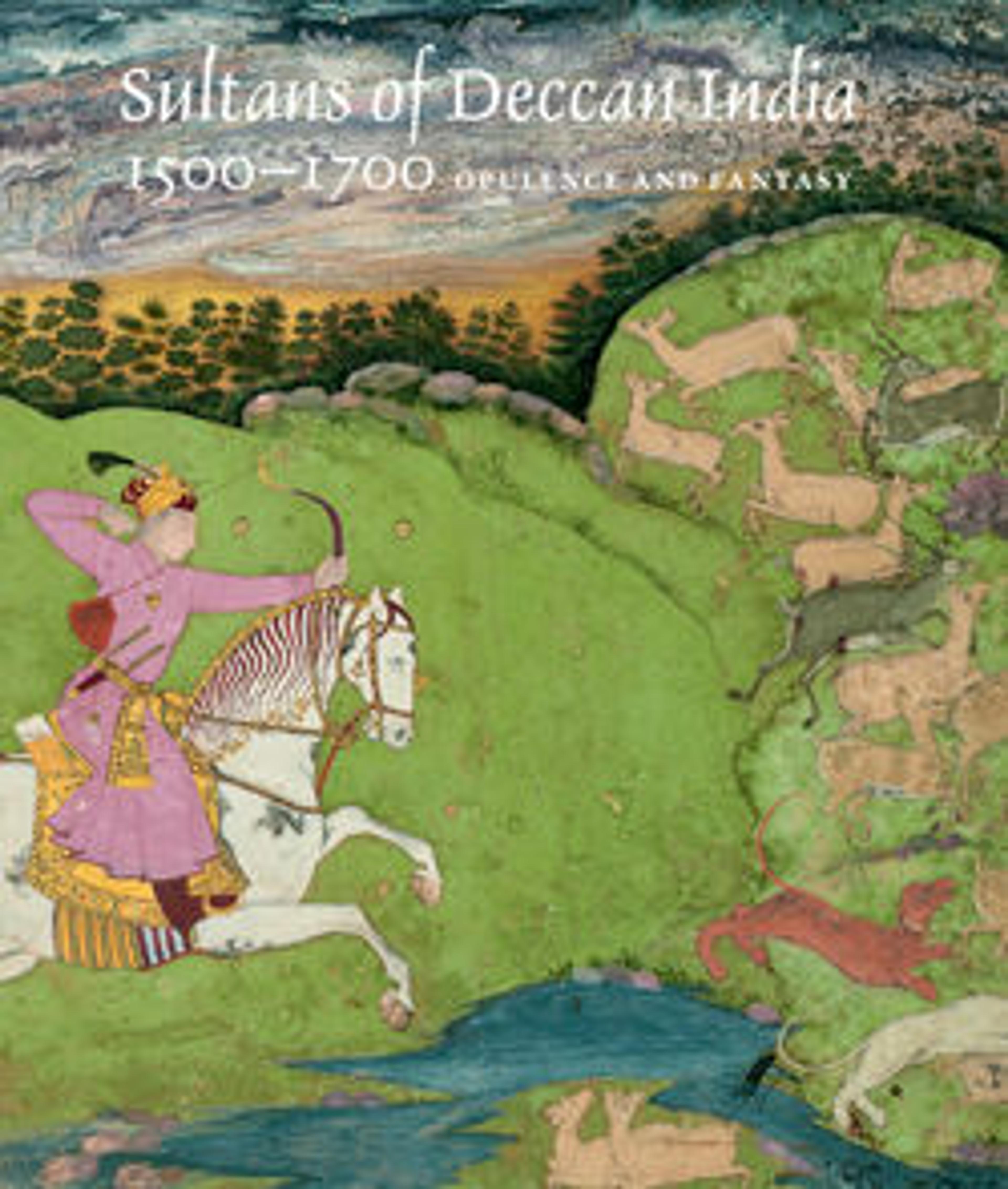Futuh al-Haramayn (Description of the Holy Cities)
The Futuh al-Haramayn is a poetic description of the Holy Cities of Mecca and Medina, composed by Muhi al-din Lari in the early sixteenth century. Often lavishly illustrated, it provides instructions on the hajj pilgrimage rituals and descriptions of important sites Muslim pilgrims can visit. The Futuh was popular in the sixteenth and seventeenth centuries, when it was mainly copied in the Ottoman realm from Mecca to Istanbul, and also in Central Asia and India. Illustrations of sites and buildings are commonly shown from a bird’s-eye view. Symbols and other details enable the reader to identify sites where important miracles of the Prophet and other events took place. Differences in style and quality exist. This Deccani version presents considerable flourish through the curving orange lines of the trees, animated purple mountains concealing hidden grotesques at their rocky edges, and bright palette.
Artwork Details
- Title: Futuh al-Haramayn (Description of the Holy Cities)
- Author: Muhi al-Din Lari (Iranian or Indian, died 1521 or 1526/27)
- Date: dated 1089 AH/1678 CE
- Geography: Attributed to India, Deccan, Kharepatan
- Medium: Ink, opaque watercolor, and gold on paper
- Dimensions: Text block:
H. 5 15/16 in. (15.1 cm)
W. 3 in. (7.6 cm)
Entire page:
H. 7 3/8 in. (18.8 cm)
W. 4 5/16 in. (11 cm) - Classification: Codices
- Credit Line: Purchase, Funds from various donors, Elizabeth S. Ettinghausen Gift, in memory of Richard Ettinghausen, and Louis E. and Theresa S. Seley Purchase Fund for Islamic Art, 2008
- Object Number: 2008.251
- Curatorial Department: Islamic Art
More Artwork
Research Resources
The Met provides unparalleled resources for research and welcomes an international community of students and scholars. The Met's Open Access API is where creators and researchers can connect to the The Met collection. Open Access data and public domain images are available for unrestricted commercial and noncommercial use without permission or fee.
To request images under copyright and other restrictions, please use this Image Request form.
Feedback
We continue to research and examine historical and cultural context for objects in The Met collection. If you have comments or questions about this object record, please contact us using the form below. The Museum looks forward to receiving your comments.
